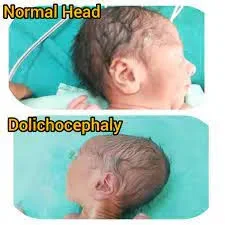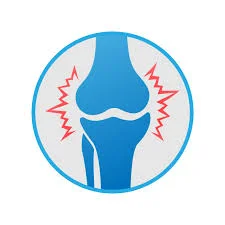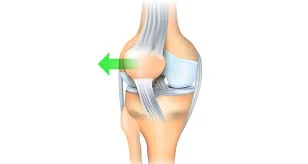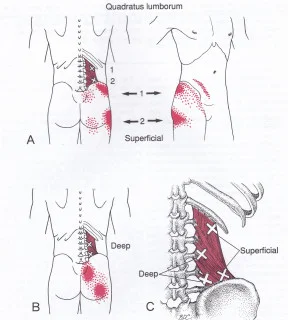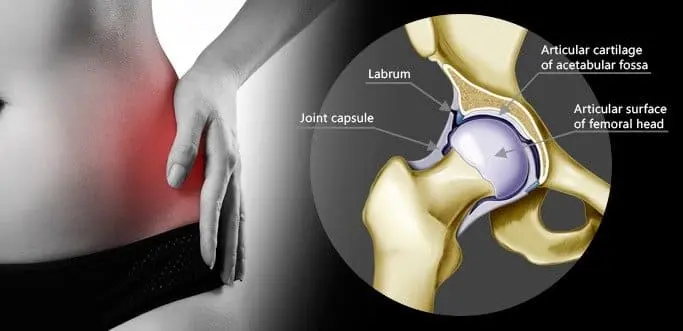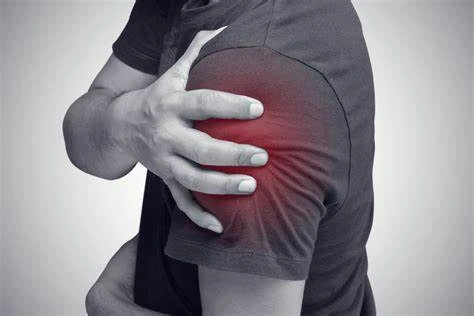Dolichocephaly
Dolichocephaly: What is it?
Dolichocephaly is a condition where the head is longer than usual in relation to its width, resulting in an elongated skull shape. It can be congenital or develop due to external factors, such as prolonged positioning in infants. In some cases, it is associated with genetic conditions like craniosynostosis. Treatment depends on the cause and may involve repositioning techniques or helmet therapy in infants.
In some cases, variables that impact skull growth during fetal development can be linked to dolichocephaly. Dolichocephaly may also be more likely to occur in babies who are born preterm or who experience unusual pressure on their heads after birth.
Causes of Dolichocephaly:
Premature fusing of the skull sutures can result in dolichocephaly, which causes aberrant development of the head shape.
Dolichocephaly can be caused by genetic reasons, as some inherited features affect the growth and shape of the skull.
During fetal development, an intrauterine restriction may cause dolichocephaly, which alters the shape of the skull in the womb.
Dolichocephaly, which changes the form of the skull, can occasionally result from prolonged pressure on the baby’s head during birthing.
Individuals may experience dolichocephaly as a result of certain medical diseases, such as craniosynostosis, a disorder in which the skull sutures close too soon.
Dolichocephaly Types:
Dolichocephaly comes in various forms, such as true dolichocephaly, posterior dolichocephaly, and anterior dolichocephaly. The front portion of the skull elongates in anterior dolichocephaly, whereas the back part elongates in posterior dolichocephaly. An overall extension of the entire skull is referred to as true dolichocephaly.
These differences can have a variety of underlying reasons and are occasionally linked to specific illnesses or developmental disorders.
- A long, thin head shape is a characteristic of primary dolichocephaly.
- External events or a variety of medical disorders might cause secondary dolichocephaly.
- A lengthy head shape that is defined by genetics is known as true dolichocephaly.
- When cranial sutures close too soon, acquired dolichocephaly may result.
- Pressure on the baby’s head for an extended period might cause positional dolichocephaly.
- Certain genetic syndromes are linked to syndromic dolichocephaly.
- There are no underlying genetic disorders associated with non-syndromic dolichocephaly.
- Genetic and acquired variables may play a role in mixed dolichocephaly.
What Signs Indicate Dolichocephaly?
An extended head shape, potential facial asymmetry, and a high forehead are some of the indications of dolichocephaly, a disorder in which the head form is longer than usual. Some people with dolichocephaly may have trouble rotating their heads or laying flat, among other head placement problems.
In extreme situations, neurological problems or developmental delays may also manifest. It’s advised to get evaluated by a healthcare professional if you or a loved one exhibits any of these symptoms to decide on the best course of action.
One of the most obvious symptoms of dolichocephaly is an irregular head shape, where the skull is longer than usual.
Infants with dolichocephaly may exhibit delayed developmental milestones, such as sitting up or crawling.
Because of the increased pressure inside the skull, dolichocephaly can cause headaches, especially in the rear of the head.
People with dolichocephaly may experience vision issues, such as double vision or trouble focusing.
Dolichocephaly may be linked to speech difficulties, such as problems with articulation or language development.
Risk elements of Dolichocephaly:
Numerous risk factors can lead to dolichocephaly, a disorder marked by an abnormally long skull shape. Among these is genetic predisposition, which makes some families more susceptible to dolichocephaly. Furthermore, this issue may potentially be exacerbated by intrauterine limitations during fetal development, such as a lack of space in the womb.
Other possible risk factors for dolichocephaly include premature birth, specific medical problems that impact skull growth, and environmental variables such as maternal smoking during pregnancy. Early detection and effective treatment of dolichocephaly can be facilitated by an understanding of these aspects.
Dolichocephaly may become more likely in infants who spend a lot of time in a supine position.
Newborns may develop dolichocephaly as a result of premature birth and related conditions.
Dolichocephaly can be more likely to be inherited if there is a genetic predisposition or family history of the disorder.
Compared to single births, dolichocephaly is more common with multiple births, such as twins or triplets.
Some babies may develop dolichocephaly as a result of intrauterine confinement caused by the womb’s limited room.
Diagnosis of Dolichocephaly:
Measurements of the head and a physical examination are usually required to diagnose dolichocephaly.
MRIs and CT scans are examples of radiological imaging that can be used to evaluate the size and shape of the skull.
Genetic testing may be taken into consideration to assess the underlying genetic variables causing dolichocephaly.
To determine any possible causes or related diseases, a thorough assessment of medical history is necessary.
The diagnosing process may benefit from a consultation with experts such as geneticists or pediatric neurosurgeons.
What is the Dolichocyphaly Treatment?
As your kid grows and develops, moderate occurrences of dolichocephaly and other types of skull malformations will often go away independently. However, different treatments and interventions could be required for moderate or severe skull abnormalities. Your healthcare professional will usually discuss with you to decide whether to pursue these interventions on a case-by-case basis.
According to the American Academy of Paediatrics (AAP) guidelines, physical treatment, helmet therapy, and surgery are the three main interventions for positional skull abnormalities and malformed skulls.
Physical Therapy:
Getting a pediatric physical therapist to help Get treatment can help you deal with the difficulties that dolichocephaly presents. In addition to evaluating your child for any developmental delays, they can provide advice on at-home stretching and posture techniques to support your child’s development.
Helmet Therapy:
The usage of a molding helmet may be beneficial for certain infants with malformed heads. This is usually advised when a baby’s head does not reach a healthy shape by the time they are five or six months old. Professionals perform the fitting and adjusting of these helmets.
Surgery:
In more extreme situations, particularly when sagittal craniosynostosis is severe, surgery may be required. The baby’s head is reshaped during surgery by surgically correcting the damaged suture. To have the optimum results, this surgery should ideally be done in the first few months of life.
Dolichocyphaly Treatments at Home:
You may promote your baby’s skull development at home with certain habits in addition to specialized therapy. The American Academy of Paediatrics (AAP) has issued the following guidelines:
Variety in Positioning: Steer clear of holding your infant in one posture for long periods, especially if it puts pressure on their head. Limit extended use of infant swings, bouncy chairs, and car seats, for instance.
Encourage Movement: Give your infant lots of chances to move, especially during tummy time. Increased tummy time can help babies with skull malformations by allowing them to move their arms, shoulders, hips, back, neck, and head normally. If your baby resists at first, start slowly and gradually increase the length of your tummy time sessions.
Alternate Feeding Positions: To encourage balanced head growth, alternate your baby’s arms while they are eating.
Change the Crib Position: Although it is necessary to put infants to sleep on their backs, you can move them around in the crib to help with head-shape balance.
Which complications are associated with dolichocephaly?
The American Academy of Paediatrics (AAP) states that most occurrences of malformed newborn heads or skull abnormalities are not life-threatening and do not endanger the health or general welfare of the child. The American Academy of Paediatrics states that “positional skull deformities do not impact brain growth or intellectual development.” Most of the time, these defects are purely cosmetic and don’t require surgery.
Severe forms of dolichocephaly, however, can be more complicated and could affect a baby’s development and health.
Furthermore, as a person enters maturity, a noticeable deformity may have an impact on their confidence and sense of self. In addition to improving the head’s shape, surgical repair in infancy might help avoid any psychological problems that might arise from serious cosmetic abnormalities.
You should speak with your pediatrician if you are worried that your child may have severe dolichocephaly, which could cause problems with development, health, or psychology. To further understand how dolichocephaly might affect your kid, they will evaluate the situation and decide whether more testing, such as a CAT scan, is required. Your pediatrician will go over particular interventions and therapies if necessary.
Approaches to Prevent Head Deformities:
Early detection and preventative actions can have a big impact on preventing head abnormalities and promoting healthy head development in your child.
Here are some helpful pointers:
Reduce the amount of time your child spends in a carrier, such as a stroller, car seat, bouncy chair, or baby swing. Long-term use of these devices can put pressure on your baby’s head, which may cause malformation.
Make stomach Time a Priority: While putting your baby on their back during the night is crucial for safe sleep (which lowers the chance of SIDS), make sure they get plenty of stomach time during the day. Muscle tone development in your baby’s arms, shoulders, hips, back, and neck is aided by tummy time. It gets them ready for milestones like crawling, sitting up, rolling, and changing postures on their own.
Alternate FeedingPosturess: Alternate your infant’s feeding postures frequently. This approach encourages the development of a regular head shape by preventing their head from being in the same position all the time.
Rotate Sleeping Orientation: Switch up the ends of the cot your infant uses before putting them to sleep. Your baby can benefit from different lighting and visual stimuli at different ends of the cot. This relieves pressure on the same area of the skull and promotes a wider variety of head movements.
You can actively support your baby’s healthy head growth and lower the chance of abnormalities by heeding these guidelines.
FAQs
Are dolichocephalic disorders normal?
According to the American Academy of Paediatrics, most cases of dolichocephaly are not serious and do not affect the infant’s health. However, other, more severe situations could be related to delayed physical skills like gripping and reaching.
What consequences can dolichocephaly cause?
One key characteristic that distinguishes CED from most other ciliopathies is dolichocephaly. It usually occurs after sagittal craniosynostosis. Developmental delays and abnormalities of the brain are also conceivable.
Dolichocephalic head shapes: what are they?
During this phase, babies are at their least mobile and cannot sit up, roll over, or change positions on their own. The positional skull deformity in infants with dolichocephaly (scaphocephaly) is characterized by a head shape that is longer and narrower, analogous to a boat.
Dolichocephaly resolves when?
Infants are sometimes sent home with dolichocephaly, even though the condition may resolve before hospital discharge. Despite being described for almost thirty years, few studies characterize the frequency of dolichocephaly in preterm infants and the pace at which it resolves with treatment.
What is causing my baby’s head to grow longer?
An oblong shape may be formed by the pressure of the delivery canal when a baby is born head first. These fissures between the skulls may cause a child’s head to change shape. Depending on the pressure’s duration and severity, the skull’s bones may precisely overlap.
References
- Vaghela, D. (2023, December 13). Dolichocyphaly – Causes, complications, treatment. Mobile Physiotherapy Clinic. https://mobilephysiotherapyclinic.in/dolichocyphaly/
- Wikipedia contributors. (2024b, December 23). Dolichocephaly. Wikipedia. https://en.wikipedia.org/wiki/Dolichocephaly

